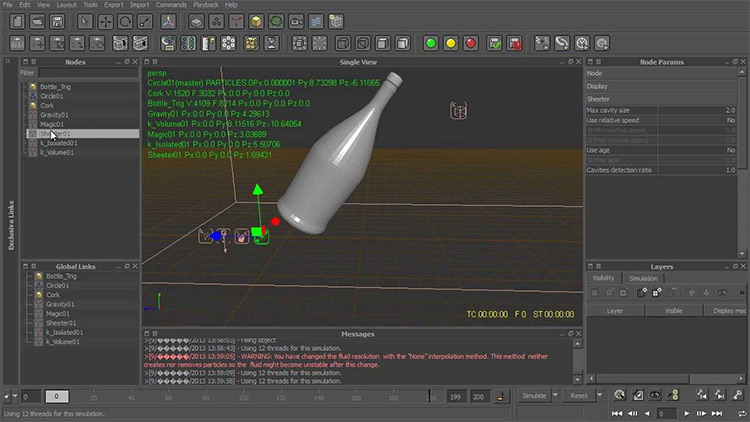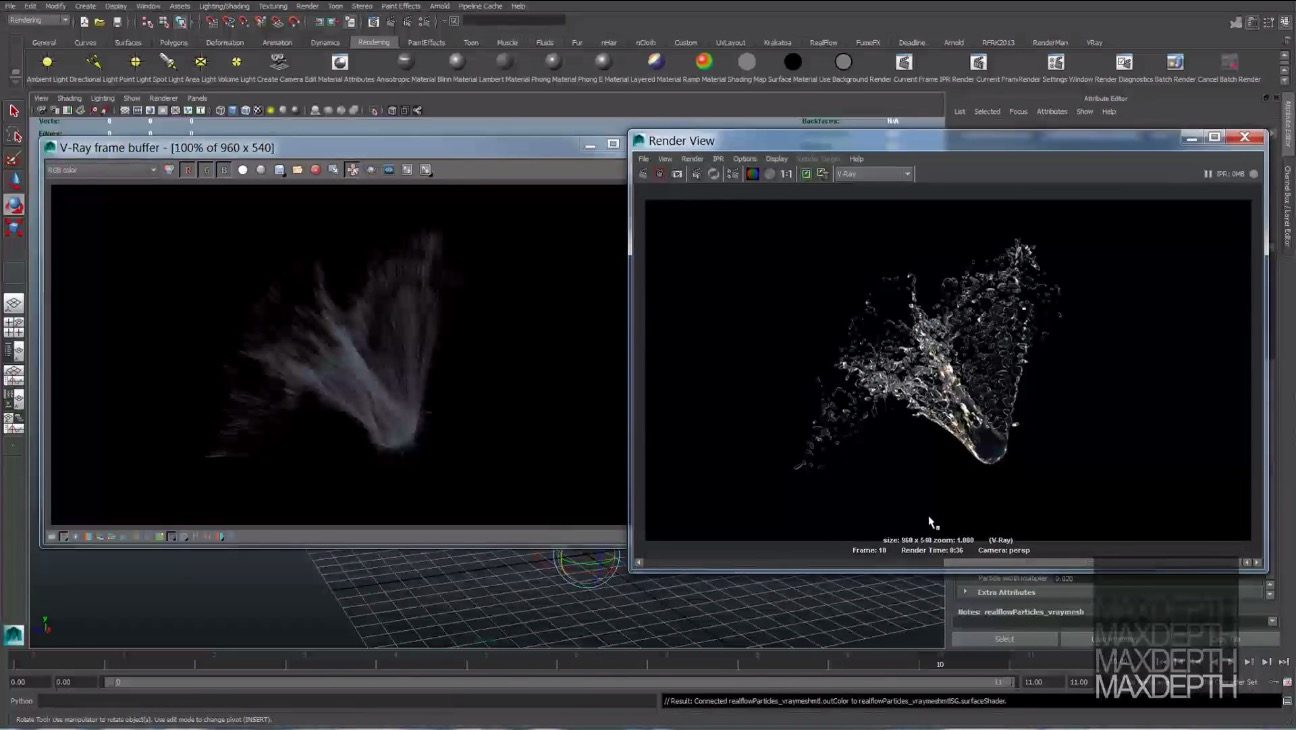

I had to do quite a bit of work on the meshes after they had been built like smoothing the surface based on nearest particle velocity – this smoothing was necessary because with my extremely high surface tension values, the splashes would look more realistic but the flat areas of the fluid where particles were just sitting around would create a large amount of pinching and bumps in the mesh. Thinkbox Frost was a great friend during this process because although Realflow did produce a nice mesh, the files were too heavy (around 700mb per frame) and weren’t able to be worked with in the 3DS Max viewport (even on a pretty beefy computer).

The meshes were also very heavy and the main splash shot and required over 60 gigs of memory just to build the mesh at render time. Upon closer inspection, I’m sure my mesh’s imperfections will be apparent. Slow motion gives the viewer enough time to really inspect the mesh and notice all the detail.

Many times, meshing issues can go entirely unseen through motion blur or just the speed of particle movement. The main challenge came during meshing because with slow camera drifts, super slow motion fluids, and macro close ups, I had created a monster that left very little room for error. I learned many of the challenges that come with slow motion fluids as this project was simulated at 1000 frames per second. The resulting particle BIN files reached about 910 gigabytes. Most simulations approached 10 million SPH particles for the emitter closest to the camera and my longest simulation took around 26 hours. I also used large amounts of standard particles in Realflow, using the SPH particle emitters to get more detail. I worked in a smaller scale than usual for this project in an attempt to maintain real-world scale, which resulted in unusually high values for particle parameters such as resolution and surface tension – in some cases the fluid resolution reached 500,000 and surface tension reached 1,000,000 since it’s resulting fluid shape is effected proportionally. For this project, I used Realflow 2014 for rigid body and fluid dynamics, Thinkbox Frost for particle meshing, Thinkbox Genome for mesh manipulation, 3DS Max with Vray for rendering, and Nuke for compositing. I enjoy making introductory shots to my showreels and use these intros as an opportunity to do some fun cg things, usually involving liquids.


 0 kommentar(er)
0 kommentar(er)
